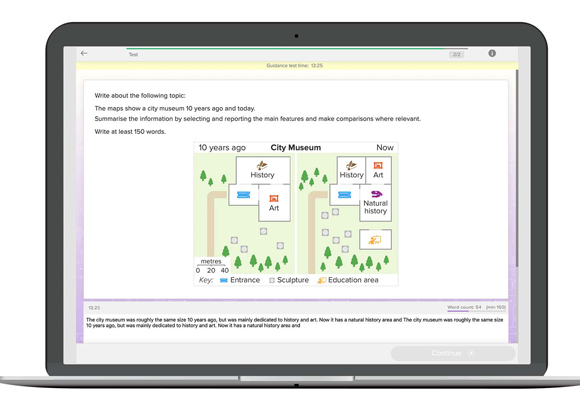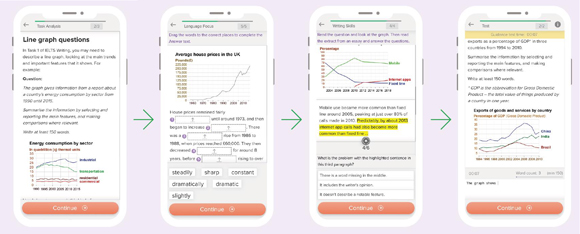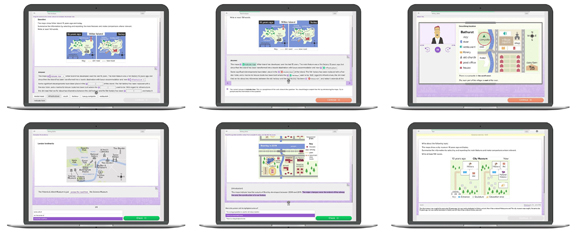About IELTS Writing
IELTS Writing A2 - B2 can be used flexibly as self-study courses, or as a homework supplement for face-to-face IELTS writing training. Those who are willing to study 2-3 hours a week over several months will see a significant improvement in their level and in their test score.
Each level begins with an overview of the IELTS Writing test. This is followed by lessons that cover IELTS Writing Task 1 (writing a report based on visual input) and Task 2 (writing an essay).
All lessons include activities that encourage and train students to check their work for common errors, and provide important tips for maximizing scores.

Systematic Task Coverage
The lesson structure throughout the IELTS Writing courses follows a systematic flow from Task Analysis to Language Focus, to Writing Skills and to an end-of-lesson Test. Each level includes a variety of inputs for Writing Task 1 (charts, maps, process diagrams) and Writing Task 2 (opinion, problem solving, advantages and disadvantages).
The Language Focus sections present practice activities with key phrases, vocabulary, and specific grammatical structures that will help students produce better writing, with better range and accuracy to improve their scores.
Writing Skills sections are typically presented with an animated lecture which include tips on how to meet the criteria of the task, and practice with structure, cohesion and coherence.
In the test section, the student is given either a Task 1 report or a Task 2 essay to write within a suggested time limit. At the end, feedback is provided in the form of a model answer with specific features highlighted for students to compare their own writing against. Every lesson includes at least three complete models either as part of the practice cycle, or the test cycle.
IELTS Writing features:
15 lessons at each level covering Academic IELTS Writing.
Animated tutorials and skill summaries to help learners understand the exam format and task-types for writing.
Language focus sections to increase knowledge of IELTS-related vocabulary, and grammatical structures that will improve both range and accuracy.
Structured writing skills practice sections that ensure students know how to meet the criteria of the tasks, and help them produce clear and coherent pieces of writing.
Clear writing models, with explanations included in every lesson as part of skills practice, or the testing cycle.
Lesson Flow
Lessons follow a systematic cycle, and are broken down into short modules. Students can begin a lesson, take a break and simply pick up where they left off. An end-of-lesson test helps consolidate both the language and skills learned.
Lesson Flow example taken from IELTS Writing B1:




![]()